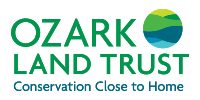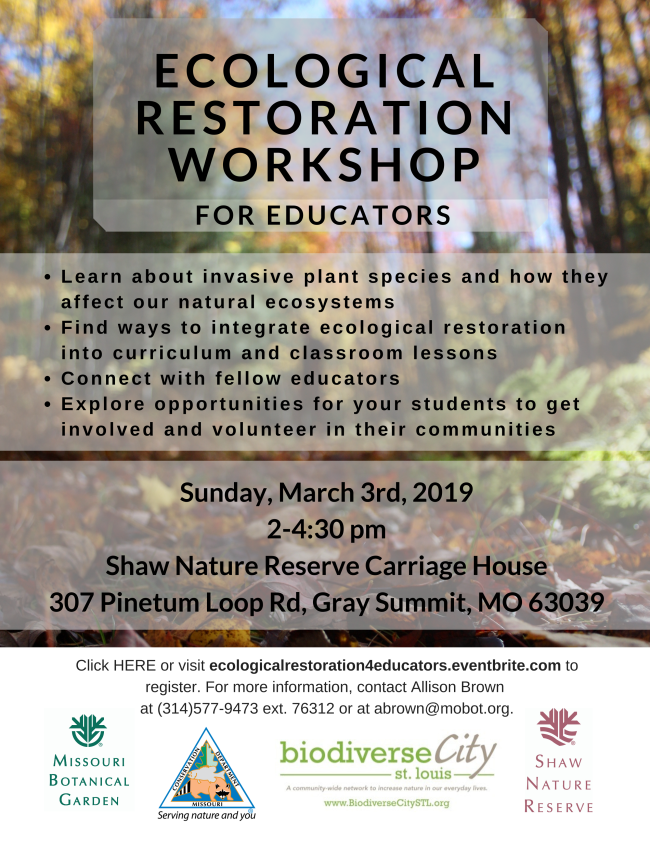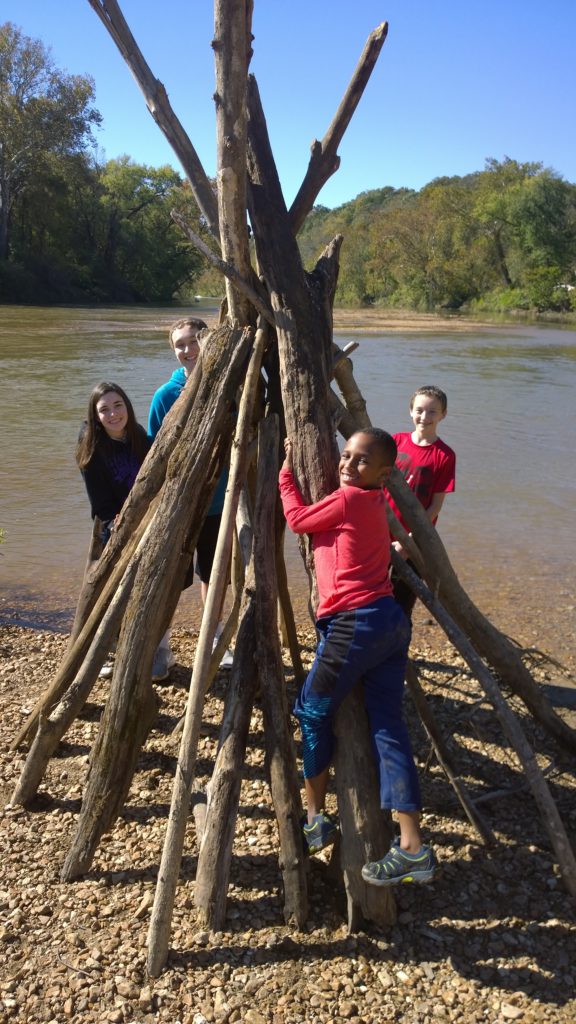
Every winter our family and friends visit gravel bars in Missouri. This is one of our favorite traditions. Our twelve-year-old heads for the water, no matter what the temperature, in search of sculpins and crayfish. (We believe he was a polar bear in a former life). He picks up, or attempts to pick up, every treasure that gets lodged in the gravel. He finds perfect Ozark diamonds, including rocks of every shape and color, tires, a Coleman folding chair, an old Bardenheier’s wine bottle cap, odd chunks of metal and even a whole truck!
My husband heads off down the gravel bar in search of native plants to collect and grow in his garden. He loves finding wild gourds — rambling vines that produce fruit that look exactly like turkey eggs. I find myself keeping an eye to the horizon looking out for eagles and hawks. I’m in awe at the stunning beauty of pure white sycamore trees in winter and the regenerative power that Ozark Rivers and gravel bars offer. Our family and friends are disconnected from the worries and chaos of life and are plugged directly into this amazing source of energy that fuels creativity, happiness and a sense of belonging.
The experience grounds us and possibly keeps us from going altogether crazy. For me, as transformative as all this is, I’m constantly reminded that our gravel bar tradition isn’t one of life’s free gifts. It is being watched over, protected and restored by concerned land and business owners, river experts, government agencies and members of organizations like Ozark Regional Land Trust who all work tirelessly to speak for the trees … and also the river!
- Abigail Lambert, Ozark Land Trust River Stewardship Project Coordinator
Nancy’s Story
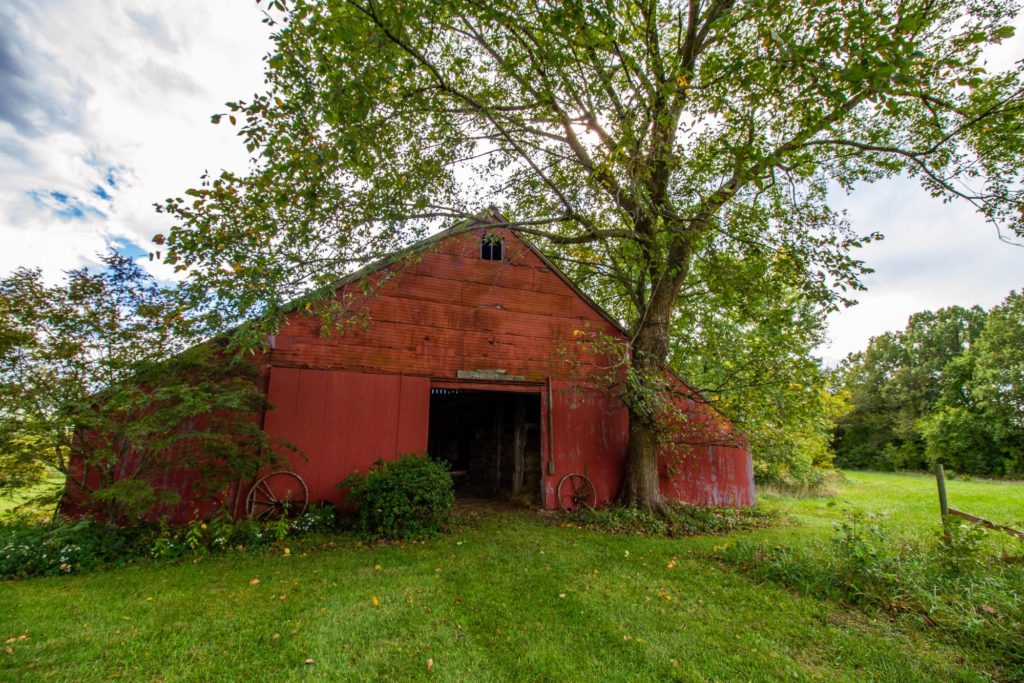 Nancy Tucher began digging her roots into Missouri in 1992 when she moved from Canada to Missouri with her dog, cat and horse. When she arrived in New Melle, her first mission was to find a place to board her horse.
Nancy Tucher began digging her roots into Missouri in 1992 when she moved from Canada to Missouri with her dog, cat and horse. When she arrived in New Melle, her first mission was to find a place to board her horse.
Nancy found a place for her horse in a 150-year-old barn on the property that Nancy would one day own. Her horse didn’t realize the historical significance of his new lodgings, however. This barn was built around the time of the Civil war when barn builders used wooden pegs for support! This barn, built entirely without nails, housed several horses from around the area. Over time, the farm’s previous owner began to lose business as the horses moved on. It was time to sell the barn.
Nancy had fallen in love with the land and convinced her son and daughter to buy the 29-acre property. Sometime later, a beautiful 10-acre property next door went up for sale. Nancy knew it wouldn’t stay undeveloped for long if somebody got ahold of it. To save it from potential development, Nancy bought the land herself. Eventually, she also purchased the original property next door, including the 150-year-old barn. When all the papers were signed and the land finally belonged to her, she began looking for ways to preserve it.
After a failed attempt at securing an easement with another up-and-coming land trust, Nancy found the Ozark Regional Land Trust. She worked with Abigail Lambert and the team and successfully placed her land under our protected umbrella. Ozark Regional Land Trust helped Nancy ensure her land will only be used for its intended purpose of keeping horses and farms.
According to Nancy, she hopes her beloved land will remain “little green spec on our planet” forever.

About the property: The gorgeous, classic rural Missouri property includes multiple fields, barns and a pond. Nancy sees regular wildlife out and about on her total 39 acres of land, including two families of foxes (born in one of her barns), snakes, deer, snapping turtles and plenty of wide-mouth bass.
About the barn: As stated above, the barn was built at a time before the use of nails. Wooden pegs were driven into the oak beams which held the barn together. To this day, if you look up at its ceiling, you can see entire intact trunks of oak trees, which were used instead of cut-up boards. The barn has had some contemporary updates since its construction, including a new roof and supports. Today, the barn is used to store hay.
Upcoming Event: Restoration Workshop for Educators
What is a Land Trust?
We get this question a lot: so what exactly is a land trust? Great question. A land trust does a couple of really important things that help preserve natural resources and protect land from development.
First off, a land trust is a non-profit organization that conserves land by owning and managing land for the public benefit or through something called a conservation easement with a private landowner. Easements are a legal agreement between the landowner and land trust that protects the land against any activity that could hinder its value to conservation. Easements are granted when a team can legally prove the land’s conservation will have benefits to the public, such as improved water and air quality, preserved wildlife habitats, available recreation areas, etc.
At Ozark Land Trust, the most important aspect of what we do is to protect the land in perpetuity. This means that, even if the property is sold, the land cannot be used for anything beyond its original conservation purpose, whether that be water quality, forestry, agriculture, or in the case of Nancy’s land, open space where horses will always be allowed.
Help Us Protect Land Forever
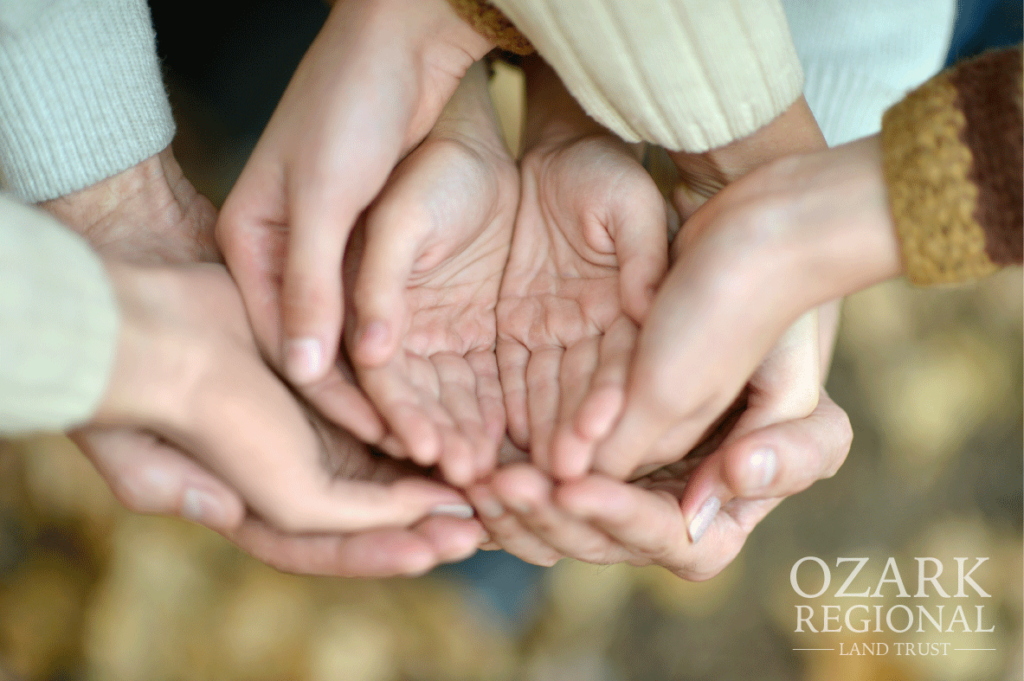 The work we do at Ozark Land Trust helps ensure the land we manage will be conserved forever — for your children, grandchildren, great-grandchildren and beyond. In order to do this, we need to work now. The cost to conserve nature is going up. Securing lands from being developed and restoring damaged forests and prairies takes more money now than it once did. It is more expensive to make sure our water systems are free from pollution and our public trails can be properly maintained for public access. Consider a one-time or recurring donation to Ozark Land Trust and help leave better, healthier land for future generations.
The work we do at Ozark Land Trust helps ensure the land we manage will be conserved forever — for your children, grandchildren, great-grandchildren and beyond. In order to do this, we need to work now. The cost to conserve nature is going up. Securing lands from being developed and restoring damaged forests and prairies takes more money now than it once did. It is more expensive to make sure our water systems are free from pollution and our public trails can be properly maintained for public access. Consider a one-time or recurring donation to Ozark Land Trust and help leave better, healthier land for future generations.
